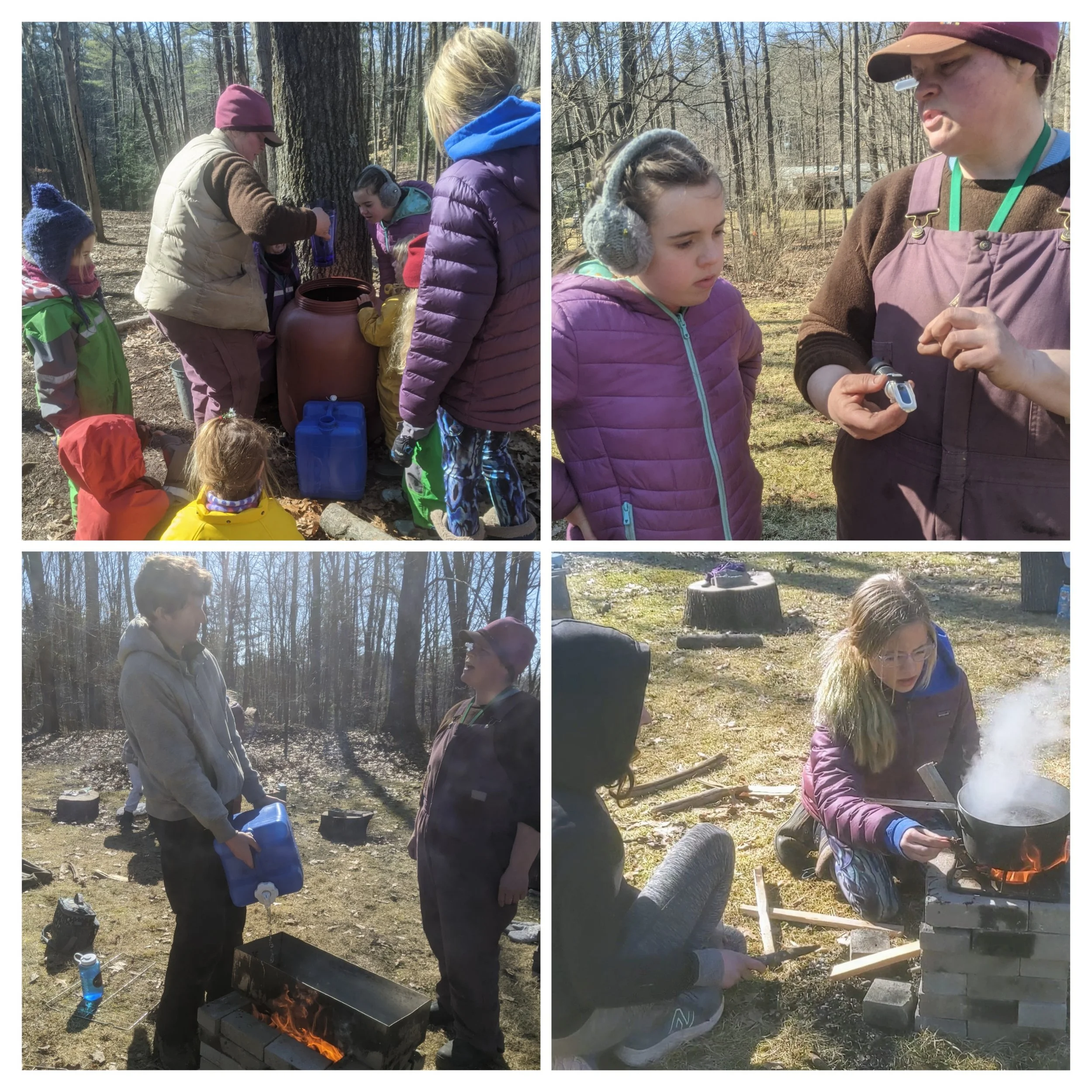Maple Syrup Time in the Lumber Primes (K/1)
It's that time of year again when the Sugar maples awaken and share their stored sunshine with us! Lumber Primes have been diligently working for weeks, turning liquid into gold. They've eagerly anticipated this time of year since September, and now, they're almost done!
Every year of maple sugaring in New England presents unique challenges, whether you're a novice or an experienced Sugar maker. This year, we've embraced changes based on our accumulated knowledge and the evolving climate.
This year has been particularly remarkable. In previous sap seasons, we would collect and measure gallons as they boiled down into sinfully delicious batches. However, this year, we decided to make multiple batches! Did you know that the time of the season when sap is harvested determines the color depth of the syrup? We were curious about the color syrup our trees would yield...
We tapped the first tree the Friday before February break. Children took turns performing the necessary tasks to get the sap flowing. This tree measured 57 inches in diameter, large enough for two buckets! Children drilled, tapped spiles, hung buckets, and adorned bucket hats to keep out the rain. Upon returning from break, Lumber Primes eagerly continued tapping more trees, collecting more sap, and tallying more gallons.
As with any task, many hands make light work, and maple sugaring is no exception! We collaborated with Forest Primes to identify, measure, and tap more trees around the base camp. In total, the children tapped five trees with six buckets and collected numerous gallons of sap! To track the gallons of sap we boiled, children kept a tally, color-coding the different batches of sap on the side of the large sap storage barrel using oil crayons. First, the black batch, then the purple batch, and finally the yellow batch.
When it came time to boil, more hands offered to lighten our workload! Andy’s 7th-grade science class volunteered to assist with a large boil using their rocket stoves. After All School, a group of upperclassmen carried bricks by the armload and wagonful to the meadow to rebuild their stoves as mini sap evaporators. Before long, teams of students were tending tiny fires, boiling half gallons of sap.
While the upperclassmen diligently tended their fires, collected firewood, or chopped kindling, Lumber Primes tallied more gallons of sap and collected more firewood, as rocket stoves are voracious eaters, especially the one housing our finishing pan. The stoves were named to communicate which fire needed attention— the largest was called Big Mama, holding the finishing pan that heated the sap before transferring it to smaller pots on stoves named Memaw, The Dragon, and Uncle Jebediah’s Stove, later renamed Mable.
Lumber Primes also helped teach upperclassmen how to use the refractometer, a tool sugarmakers use to gauge the sweetness of their product. By dripping sap onto the refractometer's plate, sunlight passes through, indicating its sweetness in units of measure called brix. Sap ranges between 2 and 5 brix when it's extracted from trees and turns into syrup when it reaches between 66 and 68 brix.
The first Friday community boil felt like a festive occasion with sunny and warm weather. Forest Primes joined Lumber Primes in the meadow for lunch, and the children gathered around the fire circle. Afterwards, they played in the meadow, drawn closer by the sweet aroma wafting from the boil. Sometimes, if they timed their visit just right, there were samples of skimmed foam to taste. The boil continued into the evening, welcoming many families with young children eager to partake in all things maple, with the youngest ones helping collect piles of firewood.
The second Friday boil was another valuable learning experience. Upperclassmen fire tenders faced challenges with damp wood and wet bricks from recent rains, and Uncle Jebediah’s stove proved finicky. Lumber Primes assisted in collecting sap to feed the pots and wood to fuel the fires. Super Primes and Puzzle Primes ventured to the meadow to observe, ask questions, and taste drips of sap from the spiles, while the fires burned late into the night, reducing the barrel's contents.
By the time of our third and final big fire last Friday, everyone knew their roles. Upperclassmen confidently tended fires, skimmed pots, and read refractometers. Some Lumber Primes volunteered as Upperclassmen’s Apprentices, shadowing them throughout the day, fetching specific sticks or joining groups to gather dry wood, all the while discussing imaginary worlds and real hazards. During wood collection, both groups admired a beautiful tree spanning the stream. In the afternoon, all the Mups visited, along with the Dancing Primes and the sunshine. The fires blazed until the barrel was emptied once more.
This week, Lumber Primes will finish the last batch, practicing one final time this season with the refractometer before cleaning up the forest in preparation for the upcoming annual Trash Cafe.



